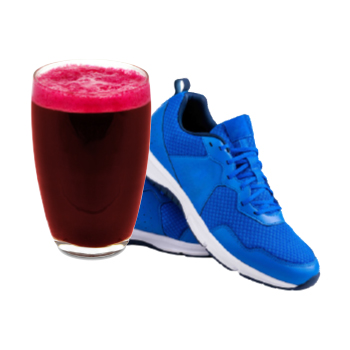


Sign-up for {N}power to get exclusive discounts, newsletters, members-only features, and more!
 Denver - Design District - Alameda and Broadway
Denver - Design District - Alameda and Broadway
368 S Broadway
Denver, CO 80209
United States
 Preferred Store:
Select a Store
Preferred Store:
Select a Store

Gestational diabetes (GD) is a common complication during pregnancy that can lead to poor health outcomes like preeclampsia and type-2 diabetes for mothers and low blood sugar at birth in infants. A 2023 study1 published in the journal Nutrients suggests there is a link between low blood levels of vitamin E during pregnancy and a higher risk of developing GD.
In the study, researchers reviewed the medical records of more than 50,000 pregnant women receiving prenatal care at 137 different hospitals across 23 provinces of China from 2015-2019. They specifically looked at fasting glucose and vitamin E blood levels throughout pregnancy, as well the prevalence of GD.
Among the cohort, more than 7,000 women (13.57%) were diagnosed with GD. They also found that in the first trimester, those women with vitamin E levels of <7 mg/L had higher average fasting glucose levels and the highest risk for GD (22.44%). Of note, the identified threshold of 7 mg/L exceeds the clinical definition of a vitamin E deficiency (5.0 mg/L), indicating that even vitamin inadequacy (rather than a true deficiency) may provoke dysfunction in blood sugar balance in pregnant women. Moreover, if their vitamin E levels continued to decrease throughout pregnancy, particularly if their first trimester vitamin E levels were less than 11 mg/L, this also increased their fasting glucose and GD risk.
 While more studies are needed to confirm these findings, based on the results, the researchers recommend that pregnant women should, “keep vitamin E levels of higher than 7mg/L in the first trimester and avoid gestational vitamin E decrease when the first-trimester vitamin E level is less than 11mg/L to prevent GD and other pregnancy complications.” They also highlighted that this may be achieved by consuming more vitamin E-rich foods and considering vitamin E supplementation, especially if lower baseline vitamin E levels are identified.
While more studies are needed to confirm these findings, based on the results, the researchers recommend that pregnant women should, “keep vitamin E levels of higher than 7mg/L in the first trimester and avoid gestational vitamin E decrease when the first-trimester vitamin E level is less than 11mg/L to prevent GD and other pregnancy complications.” They also highlighted that this may be achieved by consuming more vitamin E-rich foods and considering vitamin E supplementation, especially if lower baseline vitamin E levels are identified.
 A recent study found that consuming nitrate-rich beetroot juice three hours before exercise improved running distance in an intermittent running test in recreational [i.e., non-professional] adults. In the study,2 researchers had healthy recreational adults drink 140 mL of beetroot juice (a product called Beet It) three hours before completing an intermittent running test. Participants ran between two points between timed “beeps;” gradually, the beeps accelerated and researchers measured the time to exhaustion. When participants missed two beeps, the test was complete. This study found that consuming the Beet It drink increased the distance covered by 14 percent, compared to the placebo.
A recent study found that consuming nitrate-rich beetroot juice three hours before exercise improved running distance in an intermittent running test in recreational [i.e., non-professional] adults. In the study,2 researchers had healthy recreational adults drink 140 mL of beetroot juice (a product called Beet It) three hours before completing an intermittent running test. Participants ran between two points between timed “beeps;” gradually, the beeps accelerated and researchers measured the time to exhaustion. When participants missed two beeps, the test was complete. This study found that consuming the Beet It drink increased the distance covered by 14 percent, compared to the placebo.
It’s been recently discovered that the nitrates found in vegetables, like arugula, Swiss chard, and beets are transformed by the body into nitric oxide, which is important for vasodilation. In other words, consuming certain vegetables improves blood flow by expanding blood vessels. This ensures more blood, nutrients, and oxygen are delivered to skeletal muscles and other tissues. Beet juice is quickly becoming famous for its ability to boost all types of exercise performance, including strength training, swimming, cycling, and running. Give it a shot before your next workout!



Sign-up for {N}power to get exclusive discounts, newsletters, members-only features, and more!
